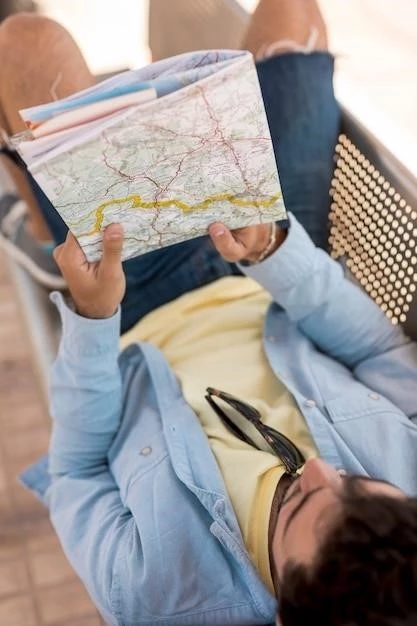Setting the Foundation for Success
Embarking on a music tour in 2024 demands meticulous planning and a strategic approach. Before hitting the road, establish a solid foundation by defining clear objectives. What do you aim to achieve with this tour? Is it to expand your fanbase, promote a new album, or solidify your presence in new markets?
Once your goals are crystal clear, assemble a dedicated team. This might include a tour manager, booking agent, publicist, and merchandise coordinator. A reliable team ensures smooth operations and allows you to focus on your music.
Finally, conduct thorough market research. Identify your target audience in each city and analyze venue options, local music scenes, and potential promotional avenues. This foundational knowledge will be instrumental in shaping your tour’s success.

Crafting Your Tour Itinerary
A meticulously crafted itinerary is the backbone of a successful music tour. It serves as a roadmap, guiding you and your team through each city, gig, and logistical consideration. Creating an effective itinerary requires a delicate balance between ambition and realism, ensuring a schedule that is both engaging for your fans and manageable for your team.
2.1. Mapping Your Route
Begin by identifying key cities and regions that align with your target audience and tour objectives. Consider factors like fan concentration, venue availability, and travel distances. Tools like Google Maps and specialized tour routing software can be invaluable for optimizing your route and minimizing travel time and costs. Aim for a logical flow between cities, minimizing backtracking and maximizing efficiency.
2. Scheduling Performances
With your route established, focus on securing performance dates. Research suitable venues in each city, considering factors like capacity, technical capabilities, and overall vibe. Contact venues well in advance to check availability and discuss booking terms. When selecting performance dates, consider factors like day of the week, competing events, and local holidays, aiming for nights that are likely to draw a strong audience.
2.3. Building in Rest and Recharge
While the temptation to pack in as many gigs as possible might be strong, remember that touring is physically and mentally demanding. Integrate strategic rest days into your itinerary to allow for travel, recuperation, and creative rejuvenation. These breaks will prevent burnout and keep your team energized throughout the tour.
2.4. Incorporating Promotional Activities
A well-structured itinerary goes beyond just gigs. Maximize your reach in each city by incorporating promotional activities. Schedule radio interviews, in-store appearances, meet-and-greets, or collaborations with local artists. These activities generate buzz, connect with fans on a personal level, and create lasting impressions in each city you visit.
2.5. Flexibility and Contingency Planning
While a detailed itinerary is essential, building in flexibility is equally crucial. Anticipate potential roadblocks, such as inclement weather, vehicle issues, or unforeseen logistical challenges. Have backup plans in place for travel, accommodation, and even performance venues. Maintaining a degree of flexibility will allow you to navigate unexpected situations with grace and professionalism.
Remember, your tour itinerary is a living document. Regularly review and adjust it based on feedback from your team, evolving circumstances, and emerging opportunities. By crafting a comprehensive, well-structured, and adaptable itinerary, you lay the groundwork for a smooth, efficient, and ultimately successful music tour.
Budgeting and Financial Management
A well-structured budget is the financial bedrock of a successful music tour. It provides a clear picture of projected income and expenses, enabling informed decision-making and ensuring financial stability throughout your journey.
3.1. Projecting Revenue Streams
Begin by estimating your potential income. This might include artist guarantees from venues, merchandise sales, and potential sponsorship deals. Be realistic in your projections, considering factors like venue capacity, ticket prices, and historical merchandise sales data.
3.2. Identifying and Categorizing Expenses
Next, meticulously list all anticipated expenses. Divide these into broad categories:
- Travel and Transportation: This includes fuel costs, vehicle rental or maintenance, flights, public transportation, and parking fees.
- Accommodation: Factor in nightly rates for hotels or rental properties, considering the number of nights and team members.
- Food and Per Diem: Allocate a daily amount for meals and incidentals for each member of your team.
- Venue and Technical Costs: Account for potential venue rental fees, sound engineering, lighting, and backline rentals.
- Marketing and Promotion: Allocate funds for online advertising, physical promotional materials, and potential public relations support.
- Merchandise: Calculate the cost of producing merchandise, including inventory, printing, and potential shipping.
- Salaries and Fees: If you have a paid team, factor in salaries, per diems, and any agreed-upon performance bonuses.
- Contingency Fund: It’s crucial to set aside a financial cushion for unexpected expenses or emergencies that may arise during the tour.
3. Utilizing Budgeting Tools
Leverage technology to streamline your financial management. Utilize spreadsheets or dedicated budgeting software to track income, expenses, and overall tour profitability. These tools offer real-time insights into your financial standing, facilitating informed decisions on the road.
3.4. Implementing Cost-Saving Strategies
Seek out opportunities to optimize your budget without compromising quality. Negotiate favorable rates with venues, explore cost-effective accommodation options, and consider preparing some meals instead of relying solely on restaurants. Small savings can accumulate significantly over the course of a tour.
3.5. Regular Monitoring and Adjustment
Treat your budget as a dynamic document. Regularly review income and expenses, comparing actual figures to your projections. Be prepared to adjust your budget as needed, making informed decisions based on real-time financial data. This proactive approach ensures you stay on track and avoid overspending.

Marketing and Promotion Strategies
A compelling marketing and promotion strategy is essential to fill venues and maximize the impact of your music tour. In today’s digital landscape, a multi-faceted approach, combining traditional and online tactics, is key to reaching your target audience and creating a buzz around your performances.
4.1. Harnessing the Power of Social Media
Leverage the reach of social media platforms like Instagram, Facebook, TikTok, and Twitter to connect with fans and promote your tour. Create engaging content, including behind-the-scenes glimpses of rehearsals, tour preparations, and life on the road. Use relevant hashtags, run targeted ad campaigns, and collaborate with influencers to expand your reach and drive ticket sales.
4.2. Building Anticipation Through Email Marketing
Cultivate an email list of dedicated fans and utilize it strategically. Send out regular newsletters with tour updates, exclusive content, and early-bird ticket offers. Personalized emails and targeted messaging can effectively drive engagement and encourage ticket purchases.
4.3. Engaging Local Media and Bloggers
Connect with local media outlets, music bloggers, and influencers in each city you’ll be visiting. Send out press releases announcing your tour dates and offer to participate in interviews, podcasts, or live sessions. Positive media coverage and online reviews can significantly boost your visibility and attract new fans.
4. Collaborating with Local Businesses and Sponsors
Explore potential partnerships with local businesses and sponsors in each city. This could involve co-hosting events, offering discounts to ticket holders, or securing sponsorship for merchandise or promotional materials. Strategic collaborations can expand your reach and provide valuable exposure within each community.
4.5. Leveraging Traditional Promotional Tactics
While digital marketing dominates, don’t underestimate the impact of traditional promotion. Distribute posters and flyers at local music stores, coffee shops, and community centers. Consider placing targeted ads in local publications or radio stations to reach audiences less active online;
4.6. Creating a Memorable Tour Experience
Remember that the most powerful marketing comes from creating a memorable and shareable experience for your fans. Encourage social media sharing during your shows, offer exclusive merchandise, and interact authentically with your audience. Word-of-mouth marketing, driven by positive fan experiences, can be invaluable in expanding your reach and building a loyal following.

Booking Venues and Accommodation
Securing suitable venues and comfortable accommodation for your team is paramount to a smooth and successful music tour. Careful planning and proactive communication are essential to secure the best options that align with your budget and logistical needs.
5.1. Researching and Selecting Venues
Begin by researching venues in each city that align with your genre, audience capacity, and overall tour goals. Consider factors like stage size, sound system quality, backstage amenities, and overall atmosphere. Online platforms dedicated to live music venues, local music publications, and recommendations from fellow musicians can be valuable resources.
5.2. Contacting Venues and Negotiating Terms
Once you’ve identified potential venues, reach out to their booking contacts well in advance. Provide a professional electronic press kit (EPK) showcasing your music, tour history, and promotional materials. Be prepared to discuss key terms, including rental fees, sound and lighting provisions, technical support, and potential marketing collaborations.
5.3. Understanding Venue Contracts
Carefully review all venue contracts before signing. Pay close attention to clauses related to payment terms, cancellation policies, sound and lighting specifications, and any exclusivity agreements. If unsure about any aspect of the contract, seek clarification from the venue or consult with an entertainment lawyer.
5.4. Exploring Accommodation Options
While securing venues takes precedence, comfortable and conveniently located accommodation is crucial for your team’s well-being. Consider factors like budget, proximity to venues, transportation options, and the number of team members requiring lodging.
5.Booking Accommodation and Managing Logistics
Explore various accommodation options, including hotels, motels, rental properties, and even tour bus bunks, if applicable. Online travel platforms, band-specific accommodation services, and recommendations from other musicians can be helpful resources. When booking, ensure clear communication regarding check-in and check-out times, parking availability, and any specific needs of your team.
5.6. Maintaining Communication and Flexibility
Maintain open communication with both venues and accommodation providers throughout the tour planning process. Promptly provide any requested materials, confirm arrival and departure times, and address any questions or concerns that may arise. Flexibility is key, as unforeseen circumstances can necessitate changes to bookings. Having backup options and maintaining a professional rapport with venues and accommodation providers can prove invaluable in navigating such situations.

Logistics and Transportation
Seamless logistics and reliable transportation are the unsung heroes of a successful music tour. Efficiently moving your team, equipment, and merchandise from city to city, while adhering to schedules and managing potential challenges, requires meticulous planning and attention to detail.
6.1. Choosing the Optimal Mode of Transportation
The best mode of transportation depends on your tour’s scope, budget, and logistical needs. Options include:
- Tour Bus: Ideal for larger bands with extensive equipment, offering comfortable travel and on-board storage.
- Van Rental: A cost-effective choice for smaller bands, providing flexibility and control over your schedule.
- Air Travel: Suitable for longer distances or tours with limited timeframes, but requires careful coordination of flights and baggage.
Consider factors like travel distances, the number of team members, equipment volume, and overall budget when making your decision.
6.2. Mapping Routes and Scheduling Drives
Optimize your travel routes using mapping software to minimize driving time and fuel costs. Factor in realistic driving times, accounting for potential traffic delays, and schedule regular breaks for drivers and passengers.
6.3. Ensuring Vehicle Maintenance and Safety
Prioritize vehicle safety and reliability. If using a tour bus, work with a reputable company and ensure regular maintenance checks are performed. If renting a van, inspect its condition thoroughly before departure and address any maintenance concerns. Carry essential tools, spare tires, and emergency supplies in case of unforeseen breakdowns.
6.4. Managing Equipment and Merchandise
Develop a streamlined system for loading, transporting, and unloading equipment and merchandise. Use durable cases and clearly label all items for easy identification. Maintain an organized inventory to track your gear throughout the tour.
6.5. Navigating Parking and Load-In Procedures
Research parking regulations and load-in procedures at each venue in advance. Secure necessary parking permits and arrange for assistance with loading and unloading if required. Communicate arrival times to venue staff to ensure a smooth and efficient setup process.
Efficient logistics and transportation require meticulous attention to detail and a proactive approach to problem-solving. By carefully planning your routes, ensuring vehicle reliability, and implementing organized systems for equipment management, you can streamline your tour’s operations and focus on delivering unforgettable musical experiences.

On-the-Road Essentials and Gear Checklist
Packing strategically for a music tour is crucial for ensuring a smooth and enjoyable experience. Beyond instruments and stage gear, countless essential items contribute to your team’s comfort, health, and overall well-being while navigating the demands of life on the road.
7.1. Personal Essentials for Comfort and Well-being
- Clothing and Footwear: Pack for various weather conditions and dress comfortably for long hours traveling and performing. Don’t forget comfortable shoes, weather-appropriate outerwear, and stage attire.
- Toiletries and Personal Hygiene: Pack travel-sized toiletries, including essentials like shampoo, conditioner, soap, toothbrush, toothpaste, and any personal hygiene products.
- Medications and First-Aid: Carry a well-stocked first-aid kit with essentials like bandages, pain relievers, antiseptic wipes, and any prescription medications.
- Sleep Essentials: Pack earplugs, an eye mask, and a travel pillow to ensure restful sleep in unfamiliar environments, especially on overnight drives.
- Entertainment and Downtime: Bring books, magazines, portable gaming devices, or download movies and music to stay entertained during downtime on the road.
7.2. Technical and Performance Gear
- Instruments and Accessories: This includes all instruments, amplifiers, pedals, cables, microphones, stands, and any necessary spare parts or tools.
- Sound and Lighting Equipment: If not provided by venues, pack your own soundboard, speakers, microphones, cables, and lighting equipment.
- Merchandise and Promotional Materials: Carry a sufficient supply of merchandise, including CDs, vinyl, t-shirts, and posters, along with promotional materials like flyers and business cards.
7.3. Logistical and Organizational Tools
- Navigation and Communication: Bring a reliable GPS device, up-to-date maps, and fully charged mobile phones with appropriate data plans.
- Power Adapters and Surge Protectors: Pack necessary power adapters for various outlets and surge protectors to safeguard electronic equipment.
- Tool Kit and Duct Tape: A basic tool kit and a roll of duct tape can be invaluable for quick fixes and temporary repairs on the road.
- Cash and Credit Cards: Carry a mix of cash and credit cards to ensure access to funds in various situations.
Creating a comprehensive packing list well in advance will help you avoid forgetting crucial items and ensure you’re prepared for the unexpected. Remember to pack light where possible and utilize organizational tools, such as packing cubes and labeled bags, to streamline packing and unpacking throughout your tour.










